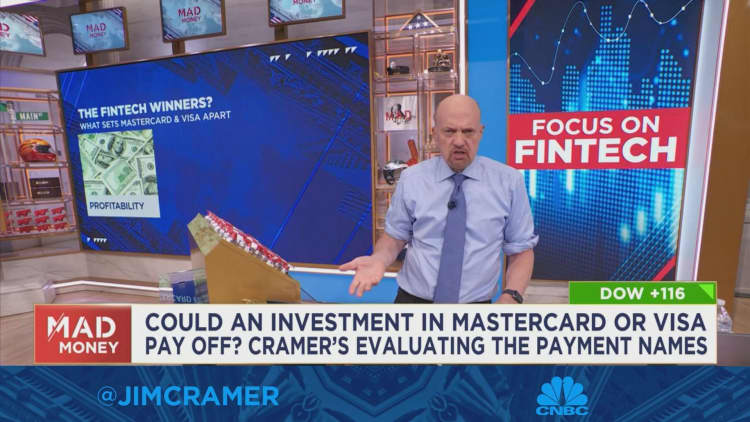BARCELONA, SPAIN – MARCH 01: A view of the MasterCard Company logo at their stand during Mobile World Congress on March 1, 2017 in Barcelona, Spain. (Photo by Joan Cros Garcia/Corbis via Getty Images)
Joan Cros Garcia – Corbis | Corbis News | getty images
SINGAPORE – There is not yet sufficient justification for the widespread use of central bank digital currencies, making it “difficult” for widespread adoption of such assets, said Ashok Venkateshwaran, master cardCNBC reported that blockchain and digital assets are headed for Asia-Pacific.
“The hard part is adoption. So if you have a CBDC in your wallet, you should have the ability to spend it wherever you want – the same as cash today,” Venkateswaran said on the sidelines of the Singapore FinTech Festival on Wednesday.
A retail CBDC, which is a digital form of fiat currency issued by a central bank, provides services to individuals and businesses, facilitating everyday transactions. This is distinct from wholesale CBDCs which are used exclusively by central banks, commercial banks and other financial institutions to settle large-value interbank transactions.
The International Monetary Fund has said that CBDCs are “a secure and low-cost alternative” to cash, with about 60% of the world’s countries exploring CBDCs. However, according to Atlantic Council data, only 11 countries have adopted them, with an additional 53 in advanced planning stages and 46 researching the topic as of June.
“But [building infrastructure to facilitate that] It takes a lot of time and effort in one part of the country to do this. But nowadays a lot of central banks have become very innovative because they are working closely with private companies like us to create that ecosystem,” the Asia-Pacific chief said.
Still, Venkateswaran said consumers are “so comfortable using this type of money today” that “there is not enough justification to have a CBDC.”
Mastercard, the second-largest card network in the US, said last week that it has completed testing of its solution in the Hong Kong Monetary Authority’s e-HKD pilot program to simulate the use of a retail CBDC such as the electronic Hong Kong dollar.
Hong Kong’s CBDC sandbox facilitates testing of the creation, distribution and spending of e-HKD within the programme.

A total of 16 companies from the financial, payments and technology sectors, including Mastercard, participated in the pilot. MasterCard’s rival Visa also participated in the project hsbc bank And Hang Seng BankTesting the feasibility of token deposits in business-to-business payments.
Venkateswaran cited Singapore as an example where the case for a retail CBDC is not compelling enough because the city-state has a “very efficient” payments system.
Last year, IMF Deputy Managing Director Bo Lee named Singapore and Thailand as countries in Asia that have made “rapid progress” by adding faster payment systems, therefore reducing transaction fees for cross-border payments. Is.
“There is no reason for a retail CBDC [in Singapore] But there is a case for wholesale CBDC for interbank settlements,” Venkateshwaran said.
On Thursday, the central bank of Singapore announced that it will conduct the live issuance and use of a wholesale CBDC from 2024.
Ravi Menon, managing director of the Monetary Authority of Singapore, said that during the pilot, the Monetary Authority of Singapore will collaborate with domestic banks to test the use of wholesale CBDCs to facilitate domestic payments.
It really depends on the need of the country or what problem they’re trying to solve, said Mastercard’s Venkateshwaran.
“If you’re just trying to replace your existing domestic payments network, it’s not going to work,” he said.
“But if it’s a country where the domestic payments network is not as strong, it may make sense to have a CBDC.”







